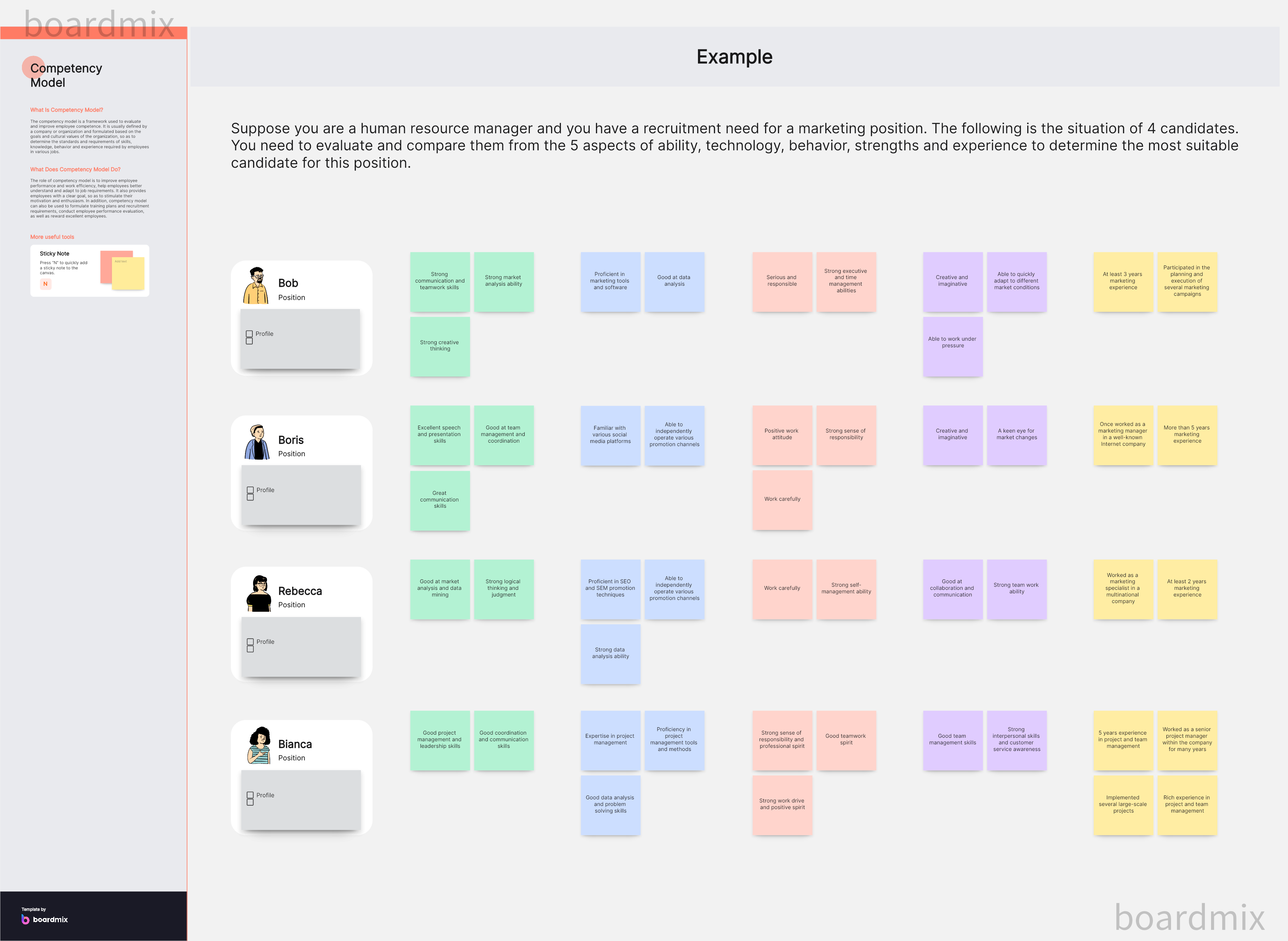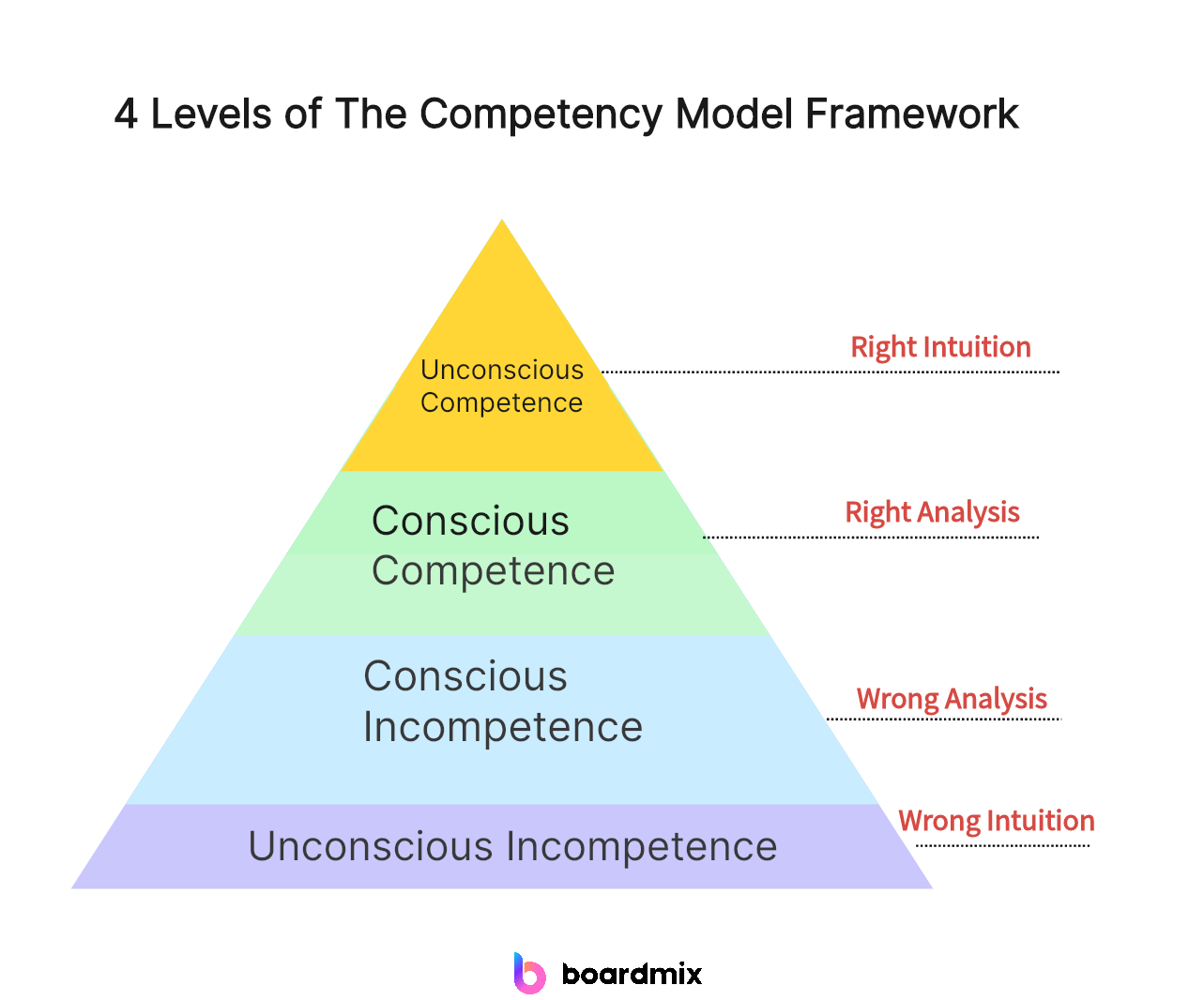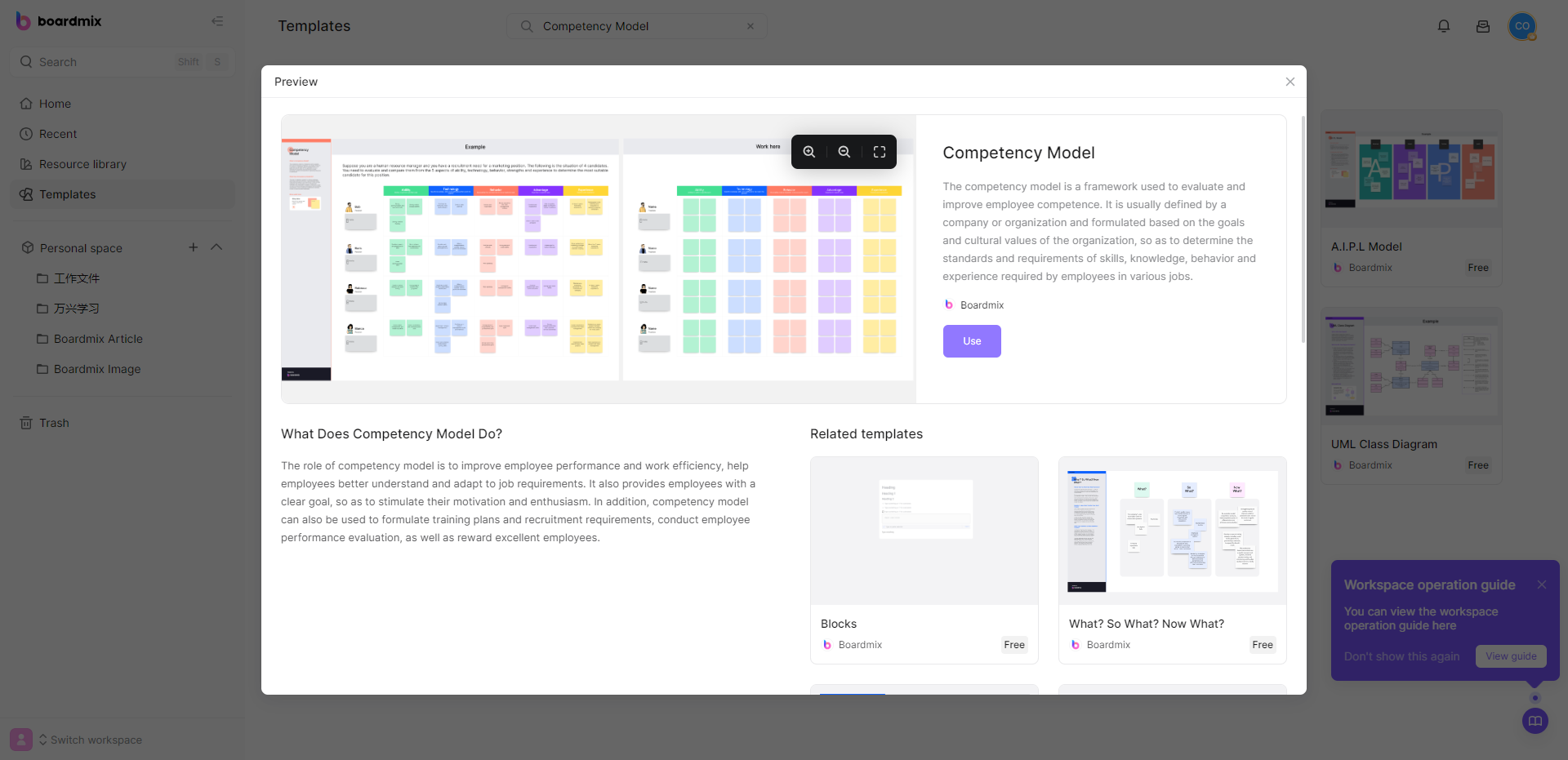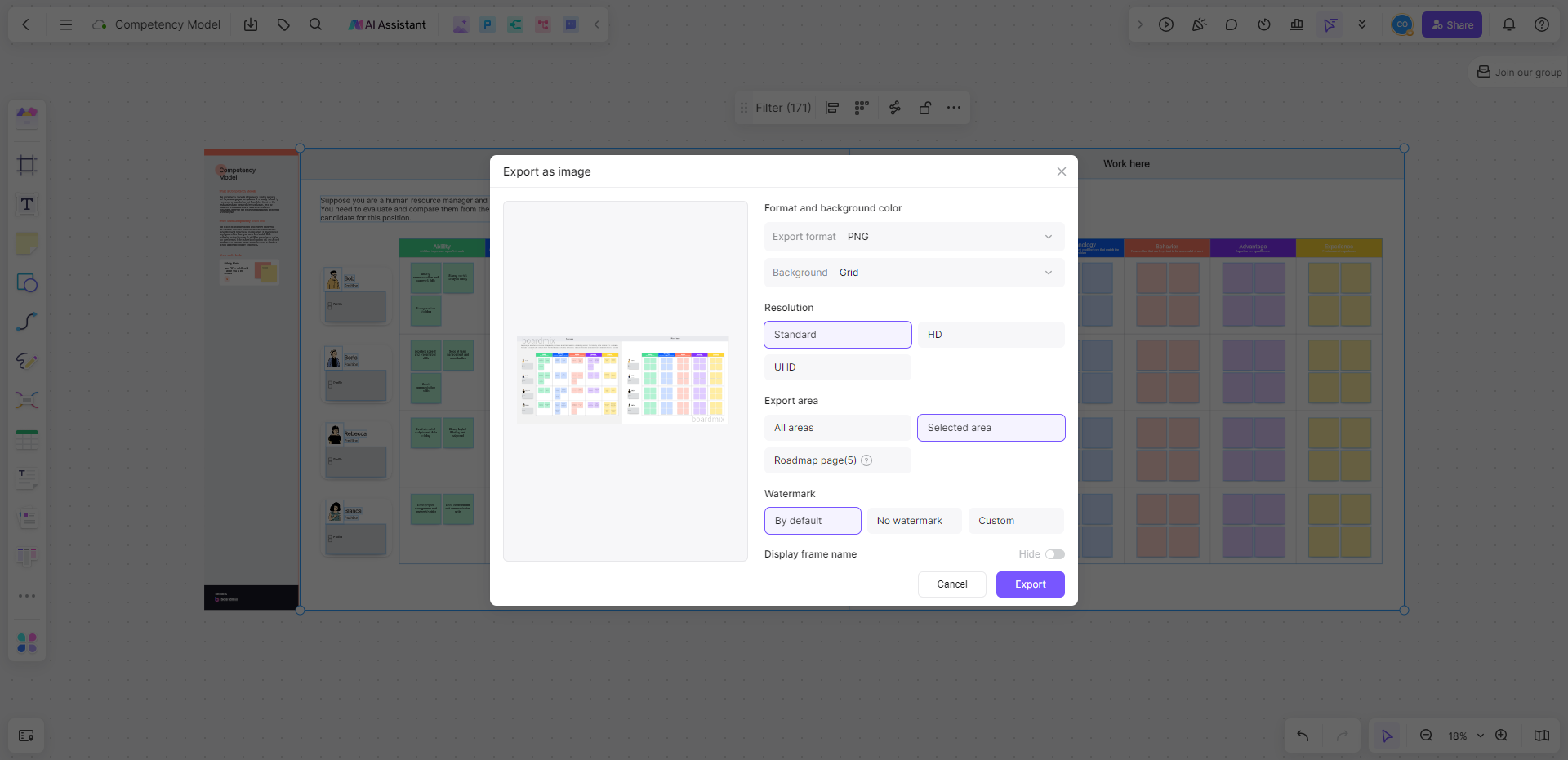Embarking on the journey to master Competency Model Frameworks? You've come to the right place. These frameworks are not just theoretical constructs; they are practical tools that can significantly enhance workforce performance and organizational success. They serve as a roadmap, guiding you in identifying, developing, and leveraging competencies within your team. What are the key components of a Competency Model Framework? And more importantly, how can you effectively create a competency model framework quickly? Let's unravel these questions together, exploring the intricacies of Competency Model Frameworks and their pivotal role in driving business excellence.

What is a competency model framework?
A competency model framework is a tool used to identify, define, and measure the key skills and behaviors needed by individuals or teams within an organization. It provides a structured way to understand and discuss the most important capabilities in achieving organizational goals. Here are several key parts that a typical competency model framework includes.
1. Core Competencies
These are abilities that all employees need to have throughout the organization, regardless of their job level. This may include basic skills such as communication, teamwork, and problem-solving.
2. Job-Specific Competencies
These are specific skills and knowledge required for specific positions or roles. For example, a project manager may need to master skills such as project management, risk assessment, and stakeholder management.
3. Leadership Competencies
These are skills required by managers and leaders, such as strategic planning, personnel management, and change management.
4. Level Definitions
Each competency is usually defined at different levels to reflect an individual's proficiency level. For example, a competency might be divided into beginner, intermediate, and advanced levels, each with its own description and expected performance.
The competency model framework can help organizations ensure that their employees have the key skills needed to achieve organizational goals and provide clear guidance for personal development and career advancement.
What are the 4 levels of the competency model framework?
The competency framework is a way to describe and organize specific skills, knowledge, and behaviors to achieve organizational goals. The common competency framework includes four levels.

1. Unconscious Incompetence
This is the most basic level. At this stage, individuals may not understand their lack of skills in certain areas and cannot recognize their mistakes or deficiencies. To break through this level, it is necessary to improve individual self-awareness through training and feedback.
2. Conscious Incompetence
At this stage, individuals begin to realize their lack of skills and understand where they need to learn and improve. This is a critical stage because it will stimulate the motivation for learning and development.
3. Conscious Competence
At this stage, individuals have acquired the necessary skills and can correctly complete tasks. However, they may need to think and focus to perform these tasks. The goal of this stage is to make skills natural and proficient through practice.
4. Unconscious Competence
This is the highest level of competence. At this stage, individuals have mastered the skills proficiently and can naturally perform without thinking. Their behavior has become natural and intuitive, allowing them to focus elsewhere when dealing with more complex or new problems.
By understanding these four levels of competency framework, organizations can better design and implement effective training and development plans, helping employees transition from unconscious incompetence to unconscious competence.
How do you create a competency model framework?
Creating a competency model framework is a systematic process that requires identifying the key skills and behaviors needed in your organization through surveys and analysis. Here are some basic steps.
1. Identify the Core Values of the Organization
The first step is to identify the core values of your organization. This includes what your organization needs to do to achieve its goals, and what your employees need to do to support these goals. This can be achieved by discussing with management, reviewing the company's strategic plan, or surveying industry best practices.
2. Identify Key Positions
After determining the core values of your organization, the next step is to identify which positions are key positions, that is, positions that have a decisive impact on achieving organizational goals. This may be because the tasks involved in these positions are crucial for the success of the organization, or these positions play a leadership role in your organization.
3. Collect and Analyze Information
After identifying key positions, the next step is to collect and analyze information about the skills and behaviors required for these positions. This can be achieved in various ways, including conducting job analysis, observing employees performing tasks, interviewing employees, or collecting performance evaluation data.
4. Write Competency Model
After collecting and analyzing information, you can start writing your competency model. Each competency should be clearly described, including its skills and behaviors as well as performance standards that employees need to meet. The model should also include relationships between various competencies and how they support organizational goals.
5. Evaluate and Revise
Finally, you should regularly evaluate your competency model and make necessary revisions based on feedback. This may involve collecting feedback from employees, managers, and other stakeholders as well as using performance data to verify model effectiveness.
Creating a competency model framework is an ongoing process that requires multiple revisions and updates. By taking this process as an opportunity to understand and improve your organization, you can ensure that your employees have the necessary skills and behaviors for achieving success.
Boardmix: Creating Competency Model Framework with Template
Boardmix provides a ready-made online editable competency model framework. Using the Boardmix template to create a competency model framework can bring many advantages.

Advantages of Creating Competency Model Framework with Boardmix Template
1. Save Time and Energy
The Boardmix template already includes all the basic elements and guiding steps for creating a competency model framework, making the creation process simpler and more efficient. There is no need to build a framework from scratch, saving a lot of time and energy.
2. Ensure Consistency and Standardization
The Boardmix template ensures that all competency model frameworks within the entire organization follow the same standards and formats. This helps maintain internal consistency in the organization, while also making communication between different levels and departments smoother.
3. Support Personalized Customization
Although it is a preset template, Boardmix allows users to customize according to their specific needs, and add or modify specific competency standards, ensuring that the model framework can meet actual business needs.
4. Convenient Integration and Management
Boardmix templates support online editing and sharing, facilitating team collaboration. Moreover, all model frameworks can be managed on one platform for easy tracking and updating.
5. Powerful Visualization Tools
Boardmix provides powerful visualization tools that can intuitively display relationships between different competencies and their impact on organizational goals, helping understand & interpret competency model frameworks.
Applying the Boardmix template to create a competency model framework can simplify the creation process, and improve efficiency while ensuring quality & adaptability of the model framework.

Create a Competency Model Framework in Boardmix
Creating a competency model framework in Boardmix can help your organization clarify goals, manage talent, and optimize business processes. Here's a step-by-step guide.
1. Prepare and log in to Boardmix
Before you begin, make sure you have a clear understanding of your organization's goals and the tools that will be used to create the model. After logging in to Boardmix, you can find a variety of tools and templates to help you create your capability model.

2. Determine the organization’s core values
Defining your organization's core values is the first step in creating any competency model framework. You need to understand and document your organization’s mission, vision, and strategic goals. This information will provide the basis for decisions in subsequent steps.
3. Identify key roles
The next step is to identify key roles. These roles are often decisive in achieving organizational goals. You may need to work with other departments or teams during this process to ensure you consider all relevant roles.
4. Define key capabilities
Once you have identified the key roles, the next step is to define the key capabilities required for those roles. In Boardmix, you can use our tools and templates to help you identify and document these capabilities.
5. Create and customize your model
Using the previous preparations, you can now start creating your own competency model. Boardmix provides customizable templates to make this process easier. Don’t forget that every organization is unique, so the model may need to be adapted and modified to suit your own specific circumstances.

6. Implement and evaluate effects
Once you have finished creating the model, you can start implementing it. Remember, any change will take time to see results, so it’s important to be patient and continue to monitor and evaluate results.
7. Continuous optimization
The final step is to continue optimizing. Organizational and market environments are always changing, and your competency model should be able to adapt to these changes. It is necessary to review the model regularly and update it as necessary.

Boardmix provides a wealth of tools and resources for creating a competency model framework, making the process simpler and more efficient. Always remember, the goal is to build a framework that aligns with your organizational needs, guides and drives success.













